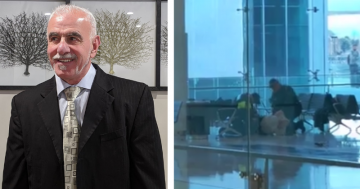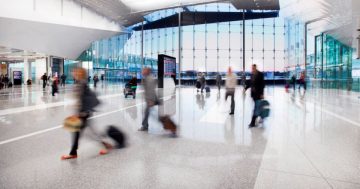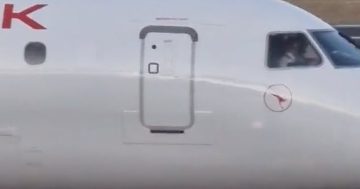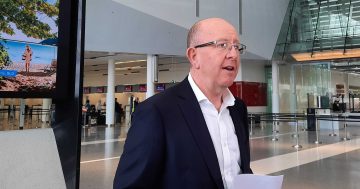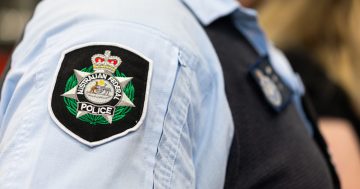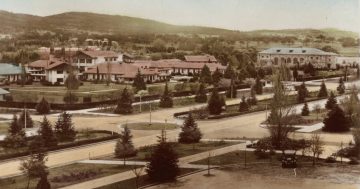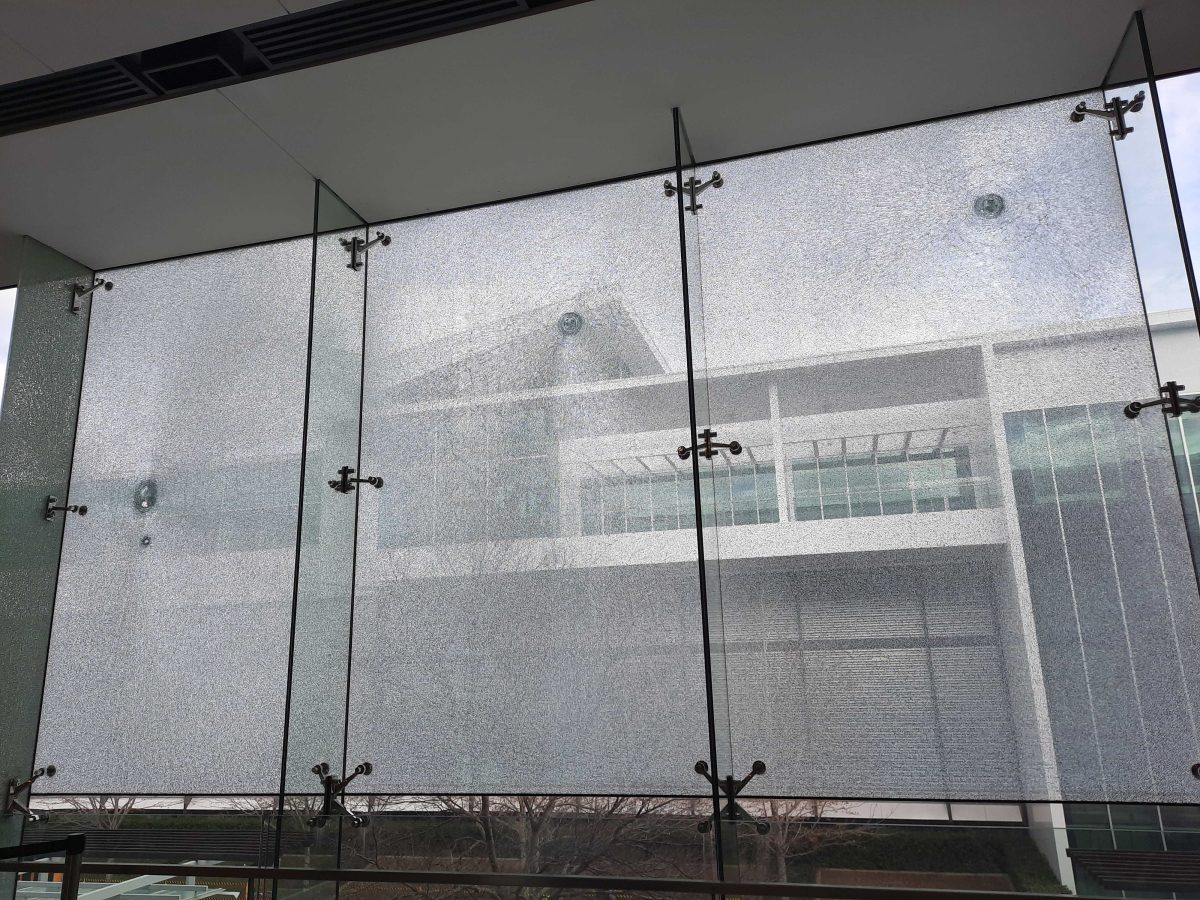
Bullet holes at Canberra Airport after shooting on 14 August 2022. Photo: Ian Bushnell.
Canberra, the bush capital, is one of the safest cities in the world. Or so it has been.
Is the tranquillity of our normally quiet national capital, just three hours’ drive from Australia’s most populous city, actually under threat?
Recent events suggest that it is, posing a serious dilemma around the policy areas of national security and community safety.
The latest of these recent events was the “casual” shooting inside the Canberra Airport on 14 August.
That otherwise quiet Sunday afternoon saw the airport evacuated and planes grounded after multiple shots were allegedly fired inside the terminal.
I say allegedly, but three holes can still be seen where bullets pierced a glass window in the freely accessible main entrance check-in area.
A man has been arrested and charged – 63-year-old Ali Rachid Ammoun – accused of cooly whipping out his Smith and Wesson and firing it repeatedly inside the terminal.
Police say he was not authorised to possess the revolver. He remains in custody, awaiting his next court appearance over the matter.
The freedom to walk off the street into an airport terminal without any security at the entrance is the same in Canberra as for almost any airport around the world – screening takes place when moving from check-in to the boarding lounges.
The difference, perhaps, is that in other capital cities – in most cities of any size – the presence of police and security officers inside the public areas of airport terminals is far greater than in Canberra.
There are few airports these days where a lone person who hasn’t passed through any security screen and doesn’t appear to be preparing to board a flight could linger around the check-in area for more than a few minutes without being asked to declare their business.
Security cameras would pick up the activity and alert authorities as being suspicious. An official of no-nonsense appearance would be dispatched to question said person.
The shooting, however, isn’t the only recent event in the capital to induce a higher level of nervousness surrounding personal and community safety.
For months, Canberra has been the target of disgruntled and disaffected nutters opposing mandates of any kind, denying the existence of the pandemic, threatening locals for wearing masks, and causing all manner of disruption to events, traffic and community life.
The so-called Convoy to Canberra seemed to go on forever (some are still loitering around the capital) and saw the ugliest side of Australia converge on the city for extended periods of mayhem and abusive behaviour.
Let’s not forget that a doomsday prepper was arrested for allegedly possessing an illegal firearm. His name was James Greer, but he goes by the reassuring name of Ironbark Thunderbolt. He was one of the rally leaders.
Federal police did as good a job as they could controlling the crowds who were repeatedly in outright defiance of the law, but there is only so much that can be done with the numbers and resourcing allocated to the AFP.
Which brings us back to the policy dilemma in the nation’s capital.
Parliament House has always been a venue for protests and rallies as campaigners gather on the lawns outside to make their gripes known.
Many of these events have been for legitimate and even honourable causes. Most are peaceful.
But there has been a change of late that has awakened the bolder and nastier sides of some of society’s more dangerous elements.
And they are no longer content to only make their presence known around Capital Hill. They have headed to the suburbs and the city streets as well.
Canberra is no longer the sleepy destination it once was. The population has grown significantly, as has the number of visitors. Both continue on an upward trajectory, which on many levels is a good thing.
As the ACT continues to attract, and to a lesser extent, produce such people, lawmakers at the territory and federal levels have the tough task of striking the right balance between maintaining Canberra’s envied lifestyle and bolstering its security.
That might mean tighter restrictions and fewer freedoms. It should definitely mean more policing resources. And surely it has to mean that attitudes towards security must change.
No one wants anything like Sydney’s horrific Lindt Cafe siege to come to Canberra.












